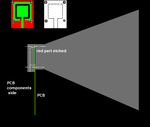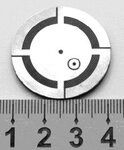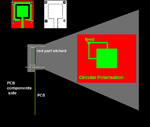per_lube
Advanced Member level 4
I saw in one of the industrial position sensor (a microwave one) use a horn antenna.
According to what I saw, the circular horn is fed with a patch antenna. (patch antenna is just connected at the small end of the circular horn)
I thought the horns can only be fed with waveguides, but now it seems there are other methods of feeding horns...
Is it possible to feed a horn with a patch antenna? what are the advantages of it?
could anyone explain it please....
cheers,
per_lube
According to what I saw, the circular horn is fed with a patch antenna. (patch antenna is just connected at the small end of the circular horn)
I thought the horns can only be fed with waveguides, but now it seems there are other methods of feeding horns...
Is it possible to feed a horn with a patch antenna? what are the advantages of it?
could anyone explain it please....
cheers,
per_lube


